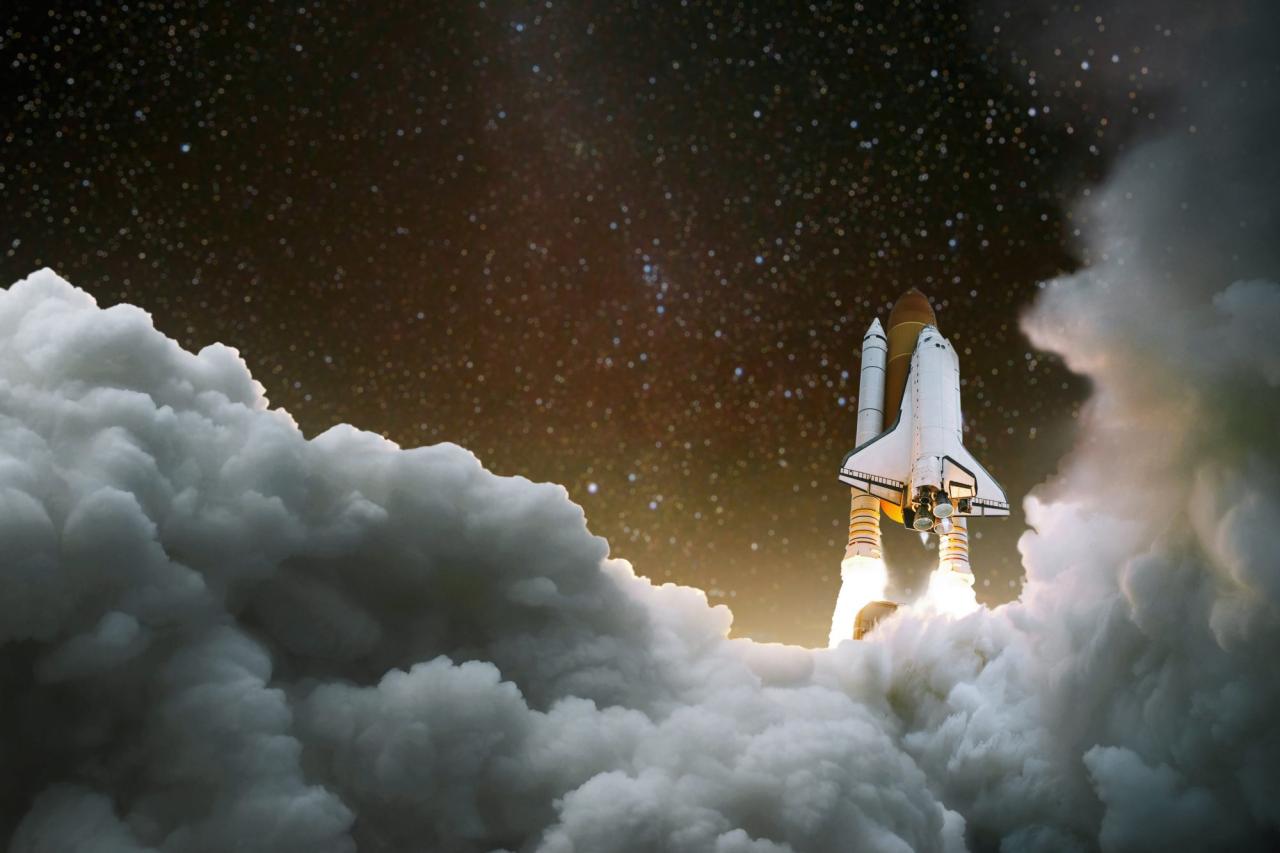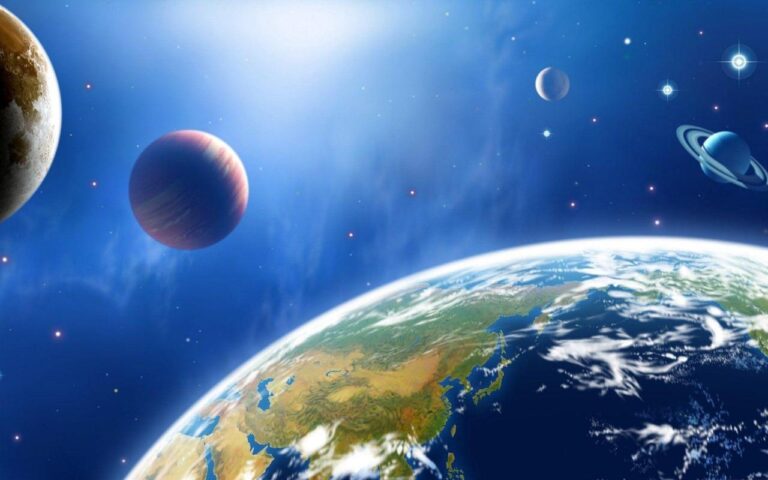The relentless human drive to explore, understand, and conquer the unknown has propelled us far beyond Earth’s atmosphere. Space exploration advances at an unprecedented pace, no longer the exclusive domain of a few government agencies but a vibrant, collaborative arena involving private companies, international partnerships, and groundbreaking technological innovation. This comprehensive article delves into the cutting-edge achievements and ambitious future plans that are rapidly redefining our presence in the cosmos. We will explore the revolutionary technologies enabling these feats, examine the profound impact of space endeavors on science, industry, and daily life, and address the critical challenges and exhilarating opportunities that humanity’s continued journey into the final frontier presents.
The Enduring Imperative of Space Exploration

Why do we explore space? The reasons are as vast and varied as the universe itself, encompassing scientific curiosity, technological advancement, economic opportunity, and the very survival of our species.
A. Scientific Discovery: Space exploration is fundamentally about expanding our knowledge of the universe.
* Understanding Our Origins: Investigating the Big Bang, the formation of stars and galaxies, and the origins of life itself by studying celestial bodies and cosmic phenomena.
* Searching for Extraterrestrial Life: Missions to Mars, Europa, and Enceladus are specifically designed to look for signs of past or present microbial life, pushing the boundaries of astrobiology.
* Studying Earth from Space: Satellites provide invaluable data for climate monitoring, weather forecasting, natural disaster management, and understanding our planet’s complex systems, offering a unique “overview effect.”
B. Technological Innovation and Spin-offs: The extreme challenges of space exploration drive the development of new technologies that often find applications back on Earth.
* Miniaturization and Efficiency: Creating lightweight, durable, and energy-efficient systems for spacecraft has led to advancements in consumer electronics, medical devices, and materials science.
* Advanced Materials: Research into alloys, ceramics, and composites for spacecraft has resulted in materials used in everything from sports equipment to aircraft and even self-cleaning fabrics.
* Communication Technologies: Satellite communication, GPS, and remote sensing technologies developed for space missions are now integral to global connectivity, navigation, and environmental monitoring.
C. Economic Opportunity: Space is rapidly becoming a new economic frontier, fostering industries and creating jobs.
* Satellite Services: The burgeoning market for satellite communications, Earth observation, navigation (GPS/GNSS), and broadband internet.
* Space Tourism: The nascent but growing industry offering suborbital and orbital flights to private citizens.
* Asteroid Mining and In-Situ Resource Utilization (ISRU): Long-term potential for extracting valuable resources from asteroids or utilizing resources found on the Moon or Mars (e.g., water ice for fuel or life support), reducing the cost of deep space missions.
D. Inspiring the Next Generation: Space exploration captures the imagination, encouraging young people to pursue careers in STEM (Science, Technology, Engineering, and Mathematics) fields, which are crucial for future innovation and economic growth.
E. Planetary Protection and Human Survival:
* Deflecting Asteroids: Developing technologies to detect and potentially deflect Earth-bound asteroids, protecting our planet from catastrophic impacts.
* Establishing Off-World Habitats: The long-term goal of establishing human settlements on other celestial bodies (Moon, Mars) as a “backup plan” for humanity in case of catastrophic events on Earth, ensuring the survival of the species.
Cutting-Edge Advancements Fueling Space Exploration
The current wave of space exploration is made possible by revolutionary advancements across various technological domains, pushing the boundaries of propulsion, robotics, and human endurance.
1. Advanced Propulsion Systems
Propulsion is the bedrock of space travel, and innovations are making journeys more efficient and reaching farther destinations possible.
A. Reusable Rocket Technology: Companies like SpaceX with its Falcon 9 and Starship, and Blue Origin with New Shepard and New Glenn, have revolutionized space access by developing rockets that can land vertically and be reused. This dramatically reduces launch costs, making space more accessible for scientific missions, commercial ventures, and even space tourism.
B. Electric Propulsion (Ion Thrusters): These systems use electricity to ionize and accelerate a propellant (like Xenon gas) to extremely high velocities, providing very high fuel efficiency (high specific impulse). While providing low thrust, they are ideal for long-duration deep-space missions, enabling probes like NASA’s Dawn to visit multiple asteroids. Future advancements include Hall effect thrusters and more powerful variants.
C. Nuclear Propulsion (Future): This includes Nuclear Thermal Propulsion (NTP) and Nuclear Electric Propulsion (NEP).
* NTP: Uses a nuclear reactor to heat a hydrogen propellant to extreme temperatures, expelling it through a nozzle for thrust. This could cut travel times to Mars by half, significantly reducing radiation exposure for astronauts.
* NEP: Uses a nuclear reactor to generate electricity, which then powers electric thrusters. Both offer superior efficiency and power for deep space missions compared to chemical rockets. While still in R&D, they are critical for ambitious future missions.
D. Solar Sails: These innovative propulsion systems use the pressure of sunlight on large, ultra-thin reflective sails to generate continuous, albeit small, thrust. Ideal for long-duration, low-thrust missions like CubeSats, offering propellant-less propulsion once deployed. Examples include LightSail 2.
E. New Fuel Chemistries: Beyond traditional hydrazine or liquid oxygen/hydrogen, research into “green propellants” and more energetic fuels is ongoing to improve safety, performance, and environmental impact.
2. Robotics and Automation
Robots are indispensable for exploring dangerous or distant environments, performing complex tasks, and supporting human missions.
A. Advanced Rovers and Landers: Mars rovers like Perseverance, Curiosity, and the Chinese Zhurong, equipped with sophisticated scientific instruments, autonomous navigation, and robotic arms, are exploring planetary surfaces, collecting samples, and conducting experiments. Future landers will deliver more complex payloads and prepare sites for human presence.
B. Space Station Robotics: The Canadarm2 and Dextre on the International Space Station (ISS) perform crucial tasks like capturing visiting spacecraft, maintaining the station, and assisting astronauts during spacewalks, extending human capabilities in orbit.
C. Autonomous Rendezvous and Docking (AR&D): Automated systems allow spacecraft to find, approach, and dock with other objects in space without human intervention. This is vital for resupplying space stations, in-orbit servicing, and assembling large structures in space.
D. Robotic Sample Return Missions: Missions like OSIRIS-REx (asteroid Bennu) and Hayabusa2 (asteroid Ryugu) have demonstrated the capability of robots to collect samples from celestial bodies and return them safely to Earth for detailed scientific analysis, providing invaluable insights without human presence.
E. Robotic Construction and Manufacturing in Space: Future robots could autonomously build structures on the Moon or Mars, utilize local resources (ISRU) to create building materials, or even manufacture components in orbit, reducing the need to launch everything from Earth.
3. Data Science and Artificial Intelligence (AI)
AI and advanced data analytics are crucial for managing vast amounts of space data, enabling autonomous operations, and accelerating scientific discovery.
A. Autonomous Navigation and Decision-Making: AI allows spacecraft and rovers to navigate complex terrains, avoid hazards, and make scientific observations autonomously, especially critical for deep-space missions where communication delays prevent real-time human control (e.g., Mars rovers).
B. Big Data Analytics for Astronomy: Ground and space-based telescopes generate petabytes of data. AI and machine learning are essential for processing this immense data, identifying exoplanets, classifying galaxies, detecting transient astronomical events, and discovering new cosmic phenomena.
C. Predictive Maintenance for Spacecraft: AI analyzes telemetry data from satellites and spacecraft to predict component failures, allowing ground crews to take proactive measures, extend mission lifespans, and prevent catastrophic malfunctions.
D. AI-Enhanced Scientific Discovery: AI algorithms can identify subtle patterns in planetary data, help interpret geological formations on other worlds, and even design experiments onboard autonomous probes, accelerating the pace of scientific breakthroughs.
E. Smart Habitation Systems: Future human habitats on the Moon or Mars will use AI to manage life support systems, optimize resource consumption (water, air, energy), monitor crew health, and automate routine tasks, ensuring the safety and well-being of astronauts.
4. Human Spaceflight Systems
Ensuring human safety and capability in the harsh environment of space is paramount for extending our presence beyond low Earth orbit.
A. Commercial Crew and Cargo Services: Private companies like SpaceX (Crew Dragon, Cargo Dragon) and Northrop Grumman (Cygnus) are now routinely ferrying astronauts and supplies to the ISS, reducing NASA’s reliance on foreign vehicles and lowering costs, enabling more frequent access to space.
B. Orion Spacecraft and Space Launch System (SLS): NASA’s Orion capsule and the powerful SLS rocket are designed for deep-space human missions, including the Artemis program to return humans to the Moon and eventually journey to Mars. These systems are built for long-duration missions beyond Earth’s protective magnetic field.
C. Gateway Lunar Outpost: A planned small space station in orbit around the Moon, serving as a stepping stone for lunar surface missions, a science lab, and a proving ground for technologies needed for deep-space travel to Mars.
D. Life Support Systems and Radiation Shielding: Innovations in closed-loop life support (recycling water, air, waste) and advanced radiation shielding materials are critical for protecting astronauts on long-duration missions to the Moon and Mars from the dangers of deep space radiation.
E. Long-Duration Health Monitoring and Countermeasures: Extensive research on the effects of microgravity on the human body (bone density loss, muscle atrophy, vision changes) and developing effective countermeasures (exercise regimes, nutritional strategies, pharmaceuticals) to keep astronauts healthy on extended missions.
5. Satellite Technology and Earth Observation
Satellites orbiting Earth provide invaluable services and insights for our planet.
A. Mega-Constellations for Global Internet: Companies like Starlink (SpaceX) and OneWeb are deploying thousands of satellites in low Earth orbit (LEO) to provide high-speed, low-latency internet access globally, bridging the digital divide and enabling connectivity in remote areas.
B. Advanced Earth Observation Satellites: Satellites equipped with high-resolution cameras, synthetic aperture radar (SAR), multispectral imagers, and lidar are providing unprecedented data for environmental monitoring (deforestation, ice melt), disaster response, urban planning, agriculture, and defense intelligence.
C. Miniaturization (CubeSats): The development of small, standardized CubeSats has democratized access to space, allowing universities, small companies, and even individuals to launch their own satellites for various scientific, educational, and commercial purposes at significantly lower costs.
D. Satellite Servicing and De-orbiting: Technologies for in-orbit refueling, repair, and upgrade of satellites are emerging, extending mission lifespans. Critically, active debris removal technologies are being developed to clean up the growing problem of space junk, ensuring the sustainability of orbital environments.
E. Precision Navigation and Timing (PNT): Global Navigation Satellite Systems (GNSS) like GPS, Galileo, GLONASS, and BeiDou provide ubiquitous, highly accurate positioning, navigation, and timing services essential for everything from transportation and agriculture to financial transactions and emergency services.
Challenges and Ethical Considerations in Space Exploration

While the allure of space is undeniable, the grand ambitions of space exploration are accompanied by significant challenges and complex ethical considerations that demand careful foresight and international cooperation.
1. Funding and Sustainability:
Space exploration is incredibly expensive, requiring immense long-term investment.
A. High Costs: Developing, launching, and operating space missions, especially human ones, require colossal budgets. Sustaining these efforts over decades demands consistent political will and public support.
B. Economic Viability of Commercial Space: While the commercial space sector is growing, many ambitious projects (e.g., large-scale space tourism, asteroid mining) still face significant economic hurdles and require substantial initial investment.
C. Public vs. Private Investment: Balancing government funding for fundamental research and exploration with private sector investment for commercial ventures, and ensuring equitable access to space resources.
2. Technological Hurdles and Risks:
The extreme environment of space poses formidable technical challenges.
A. Radiation Exposure (for Humans): Deep space radiation outside Earth’s protective magnetosphere poses serious health risks (cancer, organ damage, cognitive impairment) for astronauts on long-duration missions to Mars or beyond. Effective shielding and countermeasures are crucial but challenging.
B. Microgravity Effects (for Humans): Long-term exposure to microgravity causes bone density loss, muscle atrophy, vision changes, and cardiovascular deconditioning. Developing effective countermeasures is vital for astronaut health and mission success.
C. Reliability and Redundancy: Spacecraft and components must operate flawlessly for years in unforgiving environments. Building in sufficient reliability and redundancy to prevent catastrophic failures is incredibly complex and costly.
D. Propulsion Limitations: Current propulsion technologies are still relatively slow for interstellar travel, or even rapid interplanetary transit, making long-duration missions challenging and costly.
3. Space Debris and Orbital Congestion:
The increasing number of satellites and launches has led to a growing problem.
A. Collision Risk: Millions of pieces of space debris (ranging from spent rocket stages to paint flakes) orbit Earth, posing a significant collision risk to operational satellites and spacecraft, threatening critical infrastructure like GPS and weather monitoring.
B. Kessler Syndrome: The theoretical scenario where the density of objects in LEO is so high that collisions generate more debris, creating a cascading effect that renders certain orbits unusable for generations.
C. Orbital Slot Saturation: The increasing number of satellite mega-constellations is leading to orbital congestion, requiring sophisticated traffic management and collision avoidance systems.
4. Planetary Protection and Contamination:
Ensuring we don’t inadvertently contaminate other celestial bodies with Earth microbes, or bring back harmful extraterrestrial ones.
A. Forward Contamination: The risk of Earth-based microbes surviving on spacecraft and contaminating potentially habitable celestial bodies (like Mars or Europa), which could compromise the search for native extraterrestrial life. Strict sterilization protocols are necessary.
B. Back Contamination: The hypothetical risk of returning extraterrestrial microorganisms to Earth that could pose a threat to Earth’s biosphere or human health. Protocols for sample return missions are incredibly stringent.
5. Legal and Ethical Frameworks:
The rapid pace of space activity is outpacing existing international laws.
A. Space Law and Governance: Existing treaties (like the Outer Space Treaty of 1967) are becoming insufficient to address new challenges like resource extraction, space tourism, mega-constellations, and national sovereignty in space. New international agreements are needed.
B. Weaponization of Space: The potential for space to become a new arena for military conflict, with concerns about anti-satellite weapons and the weaponization of orbital assets.
C. Resource Ownership: Who owns resources on the Moon or asteroids? Establishing clear legal frameworks for space resource utilization is critical to prevent future conflicts.
D. Space Tourism Ethics: Questions around the environmental impact of frequent launches, the safety regulations for private space travel, and the accessibility of space only for the ultra-wealthy.
Conclusion
Space exploration is more than a series of launches and discoveries; it is a fundamental expression of human curiosity, ingenuity, and our intrinsic drive to push boundaries. The rapid advances in reusable rocketry, sophisticated robotics, artificial intelligence, and human spaceflight systems are transforming what was once unimaginable into tangible realities, bringing the Moon and Mars within reach and offering unprecedented insights into our universe.
However, this ambitious journey demands careful navigation of significant challenges. The colossal costs, the extreme risks to human health in space, the growing threat of space debris, and the complex ethical and legal questions surrounding off-world resources and planetary protection require concerted international cooperation and responsible governance.
Looking ahead, the future of space exploration promises an even more breathtaking panorama: permanent human outposts on the Moon, crewed missions to Mars, revolutionary astronomical observatories, and a thriving commercial space economy that will unlock new industries and opportunities. By embracing innovation, fostering global collaboration, and thoughtfully addressing the ethical implications, humanity can truly fulfill its cosmic imperative, ensuring a sustainable, equitable, and inspiring future for all in the boundless expanse of space. The exploration of space is not just an endeavor; it is our shared destiny, continuously pushing the limits of what it means to be human.




